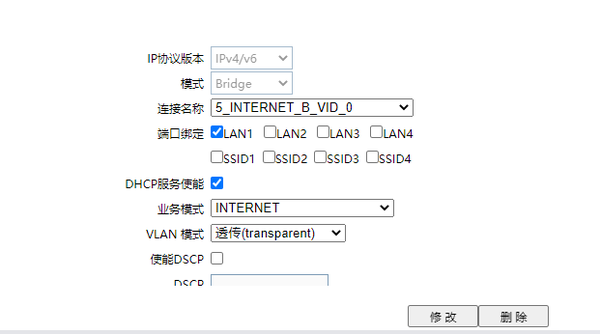目录
1、三种基本选择器(重要)
(1)基本选择器
(2)类选择器 class
(3)id选择器
2、层次选择器
(1)后代选择器
(2)子选择器
(3)相邻兄弟选择器
(4)通用选择器
3、结构伪类选择器
(1)这个就是ul的第一个元素
(2)这个是ul的最后一个元素
(3)选中p1 :定位到父元素,选择当前的第一个元素
(4)如果第一个标签不是p,则就无效
(5)需要修改的话则要把nth-child(1)改成nth-child(2)
(6)选中父元素,下的p元素的第二个,类型
4、属性选择器(重要)
(1)直接使用id属性
(2)id=first的元素
(3)class中有links的元素
(4)选中href中以http开头的元素
(5)选中结尾为jpg的元素
作用:选择页面上的某一个或者某一类元素
1、三种基本选择器(重要)
(1)基本选择器
- 标签选择器:选择一类标签 标签{}
<!DOCTYPE html>
<html lang="en">
<head><meta charset="UTF-8"><title>Title</title><style>/* 标签选择器,会选择到页面上所有的这个标签元素 */h1 {/*这个color就是颜色,badground:就是背景,border-radius:就是边框弧度大小*/color: #517851;badground: #150101;border-radius: 20px;}p{/*字体大小*/font-size: 70px;}</style></head>
<body><h1>学java</h1><h1>学Java</h1><p>看我的!</p></body>
</html>
运行结果:

(2)类选择器 class
- 选择所有class 属性一致的标签,跨标签 .类名{}
<!DOCTYPE html>
<html lang="en">
<head><meta charset="UTF-8"><title>Title</title><style>/* 类选择器的格式,.class的名称{}好处,可以多个标签归类,是同一个class,可以复用*/.shan{color: #4036bb;}.shanmu{color: #c43a3a;}</style></head>
<body><h1 class="shanmu">标题1</h1>
<h1 class="shan">标体2</h1>
<h1 class="shan">标体3</h1><P class="shan">p标签</P></body>
</html>
运行结果:

(3)id选择器
- 优先级:id > class > 标签(非常重要!!!)
- 全局唯一 #id名{}
<!DOCTYPE html>
<html lang="en">
<head><meta charset="UTF-8"><title>Title</title><style>/*id选择器:id必须保证全局唯一#id名称{}优先级:不遵循就近原则,固定的id选择器 > clss选择器 > 标签选择器*/#shanmu {color: #4036bb;}.style1 {color: #4036;}h1 {color: aqua;}#sanmu{color: #150101;}</style></head>
<body><h1 class="style1" id="shanmu">标签1</h1><h1 class="style1" id="sanmu">标签2</h1><h1 class="style1">标签3</h1><h1>标签4</h1><h1>标签5</h1><h1>标签6</h1></body>
</html>

运行结果:

2、层次选择器

(1)后代选择器
- 在某个元素的后面 祖爷爷 爷爷 爸爸 你 (就是p元素后面的全部都是后代),后代后面是空格
/* 后代选择器*/body p{background: red;}<!DOCTYPE html>
<html lang="en">
<head><meta charset="UTF-8"><title>Title</title><style>/*p{*//* background: #4036bb;*//*}*//* 后代选择器*/body p{background: red;}</style></head>
<body><p>p1</p>
<p>p2</p>
<p>p3</p><ul><li><p>p4</p></li><li><p>p5</p></li><li><p>p6</p></li>
</ul></body>
</html>

输出结果:

(2)子选择器
- 一代 儿子,这里其实就是只有p第一代才有,后面的都没有,子选择器后面是>
/* 子选择器*/body>p{background: #517851;}
<!DOCTYPE html>
<html lang="en">
<head><meta charset="UTF-8"><title>Title</title><style>/* 子选择器*/body>p{background: #517851;}</style>
</head>
<body>
<p>p1</p>
<p>p2</p>
<p>p3</p>
<ul><li><p>p4</p></li><li><p>p5</p></li><li><p>p6</p></li>
</ul>
</body>
</html>
输出结果:

(3)相邻兄弟选择器
- 其实就是有class="active"的下一个进行设置,在这里就是p1的下一个p2,p7的下一个p8,相邻兄弟选择器后面是+
/* 相邻兄弟选择器:只有一个,相邻(向下)*/.active + p {background: green;}<!DOCTYPE html>
<html lang="en">
<head><meta charset="UTF-8"><title>Title</title><style>/* 相邻兄弟选择器:只有一个,相邻(向下)*/.active + p {background: green;}</style>
</head>
<body><p>p0</p>
<p class="active">p1</p>
<p>p2</p>
<p>p3</p>
<ul><li><p>p4</p></li><li><p>p5</p></li><li><p>p6</p></li>
</ul><p class="active">p7</p>
<p>p8</p></body>
</html>
输出结果:

(4)通用选择器
- 后面跟着是~,就是当前选中的元素向下的所有兄弟元素,在这里就是p1是当前选中的元素,然后p2 p3 p7 p8是后面的同辈元素,所以他们都是兄弟元素
/* 通用兄弟选择器,当前选中元素的向下的所有兄弟元素*/
.active~p{background: brown;
}
<!DOCTYPE html>
<html lang="en">
<head><meta charset="UTF-8"><title>Title</title><style>/*p{*//* background: #4036bb;*//*}*//*!* 后代选择器*!*//* body p{*//* background: red;*//* }*//*!* 子选择器*!*//* body>p{*//* background: #517851;*//* }*//*!* 相邻兄弟选择器:只有一个,相邻(向下)*!*//*.active + p {*//* background: green;*//*}*//* 通用兄弟选择器,当前选中元素的向下的所有兄弟元素*/.active~p{background: brown;}</style>
</head>
<body><p>p0</p>
<p class="active">p1</p>
<p>p2</p>
<p>p3</p>
<ul><li><p>p4</p></li><li><p>p5</p></li><li><p>p6</p></li>
</ul><p>p7</p>
<p>p8</p></body>
</html>
输出结果:

3、结构伪类选择器
<!DOCTYPE html>
<html lang="en">
<head><meta charset="UTF-8"><title>Title</title><!--不使用 class选择器 id选择器 的前提下--><style>/*ul的第一个子元素*/ul li:first-child {background: #66c81e;}/*ul的最后个子元素*/ul li:last-child {background: #c82527;}/*选中p1 定位到父元素,选择当前的第一个元素 顺序选择当前p元素的父级元素,选中父级元素的第一个,并且是当前元素才生效!*/p:nth-child(1) {background: #47c8bc;}/*选中父元素下的p元素的第二个,类型 */p:nth-of-type(2) {background: #356fc8;}/*鼠标悬停 */a:hover {background: #c8c557;}</style>
</head>
<body>
<p>p1</p>
<p>p2</p>
<p>p3</p>
<ul><li>li1</li><li>li2</li><li>li3</li>
</ul>
<a>link</a></body>
</html>输出结果:

p1:使用
p:nth-child(1) {background: #47c8bc;}p2:使用
p:nth-of-type(2) {background: #356fc8;}li1:使用
ul li:first-child {background: #66c81e;}li3 :使用
/*ul的最后个子元素*/ul li:last-child {background: #c82527;}(1)这个就是ul的第一个元素
/*ul的第一个子元素*/
ul li:first-child {background: #2071c7;
}

输出结果:

(2)这个是ul的最后一个元素
/*!* ul的最后一个子元素*!*/
ul li:last-child {background: #26de26;
}

输出结果:

(3)选中p1 :定位到父元素,选择当前的第一个元素
选择当前p元素的父级元素,选中父级元素的第一个,并且是当前元素才生效!
/* 选中p1 :定位到父元素,选择当前的第一个元素
选择当前p元素的父级元素,选中父级元素的第一个,并且是当前元素才生效!
*/p:nth-child(1){background: rgba(45, 44, 44, 0.86);}

输出结果:

(4)如果第一个标签不是p,则就无效
/* 选中p1 :定位到父元素,选择当前的第一个元素
选择当前p元素的父级元素,选中父级元素的第一个,并且是当前元素才生效!
*/p:nth-child(1){background: rgba(45, 44, 44, 0.86);}

输出结果:

(5)需要修改的话则要把nth-child(1)改成nth-child(2)
/* 选中p1 :定位到父元素,选择当前的第一个元素
选择当前p元素的父级元素,选中父级元素的第一个,并且是当前元素才生效!
*/p:nth-child(2){background: rgba(45, 44, 44, 0.86);}
输出结果:

(6)选中父元素,下的p元素的第二个,类型
/* 选中父元素,下的p元素的第二个,类型*/p:nth-of-type(1){background: #4036bb;}
输出结果:

4、属性选择器(重要)
- id + class 结合
- 属性名,属性名=属性值(正则)
- = 绝对等于
- *= 包含这个元素
- ^= 以这个开头
- $= 以这个结尾
<!DOCTYPE html>
<html lang="en">
<head><meta charset="UTF-8"><title>Title</title><style>.demo a {/*向左浮动*/float: left;/*将元素显示为块元素*/display: block;/*高度*/height: 50px;/*宽度*/width: 50px;/*圆角弧度*/border-radius: 10px;/*背景颜色*/background: #a12727;/*对其方式:居中对齐*/text-align: center;/*文字颜色*/color: #4036bb;/*外边距*/text-decoration: none;/* 每个元素往右边偏移5个距离*/margin-right: 5px;/* font 后面是粗体,粗体大小*/font: bold 20px/50px Arial;}/* 属性名,属性名=属性值(正则)= 绝对等于*= 包含这个元素^= 以这个开头$= 以这个结尾*//*存在id属性的元素, a[]{}*//*a[id]{*//*background: #517851;*//*}*//*与上面效果是一样的*//*id=first的元素*//*a[id=first] {*//* background: bisque;*//*}*//* class中有links的元素 *//*a[class*="links"] {*//* background: yellowgreen;*//*}*//* 选中href中以http开头的元素*//*a[href^=http] {*//* background: yellow;*//*}*/a[href$="jpg"]{background: #7570aa;}</style></head>
<body><p class="demo"><a href="https://www.baidu.com" class="links item first" id="first">1</a><a href="" class="links item active" target="_blank" title="test">2</a><a href="img/123.html" class="links item">3</a><a href="img/123.png" class="links item">4</a><a href="img/123.jpg" class="links item">5</a><a href="abc" class="links item">6</a><a href="/a.pdf" class="links item">7</a><a href="/abc.pdf" class="links item">8</a><a href="abc.doc" class="links item">9</a><a href="abcd.doc" class="links item last">10</a></body>
</html>



(1)直接使用id属性
/*存在id属性的元素, a[]{}*/a[id]{background: #517851;}
输出结果:

(2)id=first的元素
/*与上面效果是一样的*//*id=first的元素*/a[id=first] {background: bisque;}
输出结果:

(3)class中有links的元素
/* class中有links的元素 */a[class*="links"] {background: yellowgreen;}
输出结果:

(4)选中href中以http开头的元素
/* 选中href中以http开头的元素*/a[href^=http] {background: yellow;}
输出结果:

(5)选中结尾为jpg的元素
/*选中结尾为jpg的元素*/a[href$="jpg"]{background: #7570aa;}

输出结果:



















